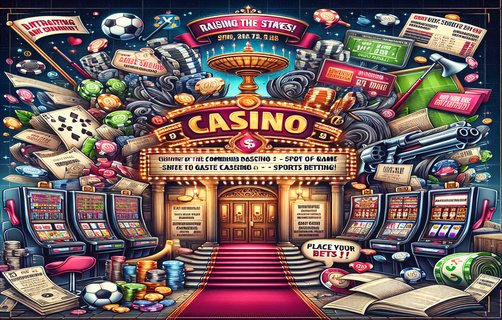Mastering Game Dynamics: An Analysis of Custom Mappable Boards and Resource Management
गेम डायनामिक्स में महारत: अनुकूलन मानचित्र योग्य बोर्डों और संसाधन प्रबंधन का विश्लेषण
The world of board games is a captivating one, blending strategy, chance, and creativity. Whether players are rolling dice or mapping strategies, understanding the intricacies of game dynamics can significantly enhance the experience. This analysis delves into key aspects of game design: custom mappable boards, bard mechanics, luck factor influence, time tracking rules, resource counters, and game balancing.
Custom mappable boards offer players the ability to modify their gaming experience. These dynamic game spaces not only enhance creativity but also introduce variability to each session. Players can create their own scenarios, which allows for personalized adventures, fostering engagement and allowing for a unique and valuable gameplay experience.
The bard role in board games adds a layer of strategy, providing support and versatility. This character type often influences other players' actions, making the position crucial in cooperative setups. Understanding this role can lead to innovative gameplay, encouraging players to strategize around support rather than just offense.

Luck factors greatly influence the outcome of games, white-knuckling players with every roll or draw. However, it’s essential to implement a luck mechanic that harmonizes with skill-based play. Analyzing how the luck factor affects gameplay can help designers calibrate their games, ensuring fairness without diminishing the thrill of chance.
Time tracking rules are integral in competitive settings, as they dictate the pace and flow of the game. Properly balancing the time limit fosters strategic planning and decision-making, ensuring that no player is unduly hindered while maintaining an engaging atmosphere.
Resource counters are pivotal in managing game elements, serving as clear indicators of progress and accessibility. They encourage players to strategize on resource allocation while creating tension and excitement with careful monitoring of availability in the game.
Finally, game balancing threads through all aspects of design. Each element must be finely tuned to prevent overpowering strategies from taking precedence. Balanced gameplay encourages varied strategies, keeps players engaged, and ultimately enriches the gaming journey.
The analysis process for these elements involves iterative testing and feedback collection. Designers playtest variations of these mechanics to gauge player reactions, ensuring they create an immersive and rewarding gaming experience. Continuous refinement based on analytical outcomes can guide the final design, leading to a game that is both enjoyable and strategically sound.
बोर्ड गेम की दुनिया आकर्षक है, जो रणनीति, भाग्य और रचनात्मकता को मिलाती है। चाहे खिलाड़ी पासे का रोल कर रहे हों या रणनीतियाँ तैयार कर रहे हों, खेल डायनामिक्स की जटिलताओं को समझना अनुभव को काफी बढ़ा सकता है। यह विश्लेषण खेल डिजाइन के प्रमुख पहलुओं में गोता लगाता है: अनुकूलन मानचित्र योग्य बोर्ड, बर्ड तंत्र, भाग्य कारक प्रभाव, समय ट्रैकिंग नियम, संसाधन काउंटर और गेम बैलेंसिंग।
अनुकूलन मानचित्र योग्य बोर्ड खिलाड़ियों को अपने गेमिंग अनुभव को संशोधित करने की क्षमता प्रदान करते हैं। ये गतिशील गेम स्पेस न केवल रचनात्मकता को बढ़ाते हैं, बल्कि प्रत्येक सत्र में विविधता भी लाते हैं। खिलाड़ी अपने दृश्य तैयार कर सकते हैं, जो व्यक्तिगत साहसिकताओं की अनुमति देता है, भागीदारी को बढ़ावा देता है और एक अद्वितीय और मूल्यवान गेमप्ले अनुभव की अनुमति देता है।
बर्ड की भूमिका बोर्ड खेलों में रणनीति का एक स्तर जोड़ती है, जिससे समर्थन और बहुआयामीता मिलती है। यह चरित्र प्रकार अक्सर अन्य खिलाड़ियों के कार्यों को प्रभावित करता है, जिससे यह सहयोगी सेटअप में महत्वपूर्ण हो जाता है। इस भूमिका को समझने से खिलाड़ियों को समर्थन के चारों ओर रणनीति बनाने के लिए प्रोत्साहित किया जा सकता है, न कि केवल आक्रमण के लिए।

भाग्य कारक खेल के परिणाम को अत्यधिक प्रभावित करता है, हर रोल या ड्रॉ के साथ खिलाड़ियों को कमजोर कर देता है। हालाँकि, यह आवश्यक है कि एक ऐसा भाग्य तंत्र लागू किया जाए जो कौशल आधारित खेल के साथ सामंजस्य स्थापित करे। यह विश्लेषण करना कि भाग्य कारक गेमप्ले को कैसे प्रभावित करता है, डिजाइनरों को अपने खेलों को कैलिब्रेट करने में मदद कर सकता है, यह सुनिश्चित करते हुए कि निष्पक्षता को बनाए रखते हुए संभावनाओं की रोमांचकता को कम न किया जाए।
प्रतिस्पर्धात्मक सेटिंग्स में समय ट्रैकिंग नियम आवश्यक हैं, क्योंकि वे खेल की गति और प्रवाह को निर्धारित करते हैं। समय की सीमा को उचित रूप से संतुलित करना रणनीतिक योजना और निर्णय लेने को बढ़ावा देता है, यह सुनिश्चित करता है कि कोई खिलाड़ी अनुचित रूप से बाधित न हो जबकि एक आकर्षक वातावरण बनाए रखा जाए।
संसाधन काउंटर खेल तत्वों को प्रबंधित करने में महत्वपूर्ण होते हैं, प्रगति और पहुंच के स्पष्ट संकेतक के रूप में कार्य करते हैं। वे खिलाड़ियों को संसाधन आवंटन पर रणनीति बनाने के लिए प्रोत्साहित करते हैं, जबकि खेल में उपलब्धता की सावधानीपूर्वक निगरानी के साथ तनाव और उत्साह पैदा करते हैं।
अंततः, गेम बैलेंसिंग सभी डिजाइन पहलुओं के माध्यम से धागा है। प्रत्येक तत्व को इस तरह से ठीक से ट्यून करना आवश्यक है कि प्रभुत्व वाले रणनीतियों को प्राथमिकता न दी जाए। संतुलित गेमप्ले विविध रणनीतियों को बढ़ावा देता है, खिलाड़ियों को व्यस्त रखता है, और अंततः गेमिंग यात्रा को समृद्ध करता है।
इन तत्वों के लिए विश्लेषण प्रक्रिया में पुनरावृत्त परीक्षण और फीडबैक संग्रह शामिल होता है। डिजाइनर खिलाड़ियों की प्रतिक्रियाओं को समझने के लिए इन तंत्रों के रूपों का परीक्षण करते हैं, यह सुनिश्चित करते हुए कि वे एक समृद्ध और पुरस्कृत गेमिंग अनुभव बनाते हैं। विश्लेषणात्मक परिणामों के आधार पर निरंतर सुधार अंतिम डिजाइन का मार्गदर्शन कर सकता है, जिससे एक ऐसा खेल तैयार हो सके जो आनंददायक और रणनीतिक साउंड हो।

comments
GamerGeek22
This article dives deep into game dynamics and it's fascinating!
BoardGameNerd
I love the idea of custom mappable boards; they really elevate the gameplay!
Strategist101
Game balancing is so important! Excited to see how it influences new games.
LuckBeADame
The luck factor can make or break a game – great insight!
ResourceMaster
Resource counters could be the key to strategic depth in games!
TimeTrackerPro
Very informative article! Time tracking rules can change everything in competitive play.